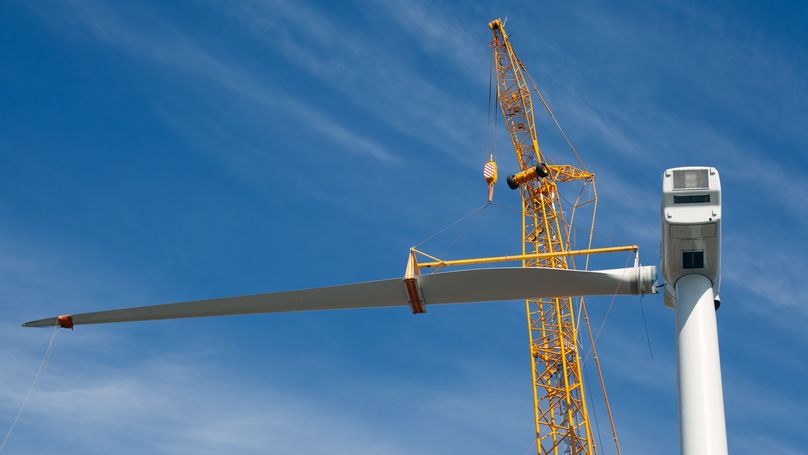Experts at the university of Strathclyde are working on a process to give new life to redundant wind-turbine blades that would otherwise go to landfill.
A team of 12 in the institution’s Advanced Composites Group is developing a technology to recycle the giant glass-fibre sails as high-value material for vehicle manufacture, construction and aviation. The group was established 10 years ago in recognition that as wind farms became more efficient at generating low-carbon electricity, demand for turbines would grow along with their size – and the need to dispose of blades responsibly at the end of their useful lives.
“The wind industry is the fastest-growing global consumer of fibre-reinforced plastic composites. In parallel with this growth, composites waste from end-of-life wind turbine blades is rising,” said Liu Yang, head of the ACG. “Unlike other components such as the foundation, tower, gear box and generator, modern wind turbine blades are currently not designed for recyclability. Consequently, developing commercially viable solutions for blade recycling and reuse is rapidly becoming one of the most important challenges facing the global wind industry.”
Though a small proportion go to incineration plants to be burned for energy or are broken up to make aggregate for use in construction, most blades go to landfill sites at the end of their commercial life.
The composites group, part of the university’s Department of Mechanical and Aerospace Engineering, is addressing a big and growing problem. In the next five years an estimated 14,000 wind turbine blades will be decommissioned in Europe and 10,000 in the US. Blades supplied in the UK are predicted to reach 10,000 tons annually, increasing to 30,000 tons a year by 2030. Those in a modernutility-scale installation can stretch to 50 metres.
The patented Strathclyde technology involves separating reclaimed fibre from resin and restoring it to performance levels that compare with new fibres. The process involves mechanically downsizing the blade to 20mm or smaller segments before extracting the fibre, which typically makes up 60% of the blade by weight. Recycling without downsizing would be neither economical nor efficient due to the size of equipment required and difficulty in transportation.
“Our approach is up-recycling for high-value applications instead of down-recycling for cheap fillers and aggregates,
Recycled composites could be used to make vehicle panels, dashboards and bumpers as well as domes, facades and columns in buildings and could even be used in some aircraft. Strong, durable, corrosion-proof and lightweight, the material is expected to be super-efficient and eco-friendly.
Recycling wind turbine blades is fundamentally a techno-economic challenge. Research and innovation are still urgently needed to offer the industry diverse technical solutions and business strategies,” said Liu Yang.
“Composite waste is by no means a problem for the wind industry alone. It also affects building and construction, electrical and electronics, and transport. In parallel with individual sectors and the research community, policy and legislation also have an opportunity to bring key stakeholders together in developing a composites recycling industry.”
Finding a recycling solution for blades has to be a priority for the industry, but many wind farm reinstatement bond assessments have been made on the basis that the blades are recyclable so care should be taken to ensure these are still adequate to cover the decommissioning liabilities at the end of the life of the wind farm.
CUTTING EDGE? HOW OLD BLADES ARE DEALT WITH NOW
While most retired blades are destined for landfill, other practices are being implemented.
A market is emerging in refurbished turbines for faster payback. Retired blades can also find a second life by conversion to civil structures and furniture units.
Beyond direct reuse and repurposing, some blades are broken up for use as aggregate in other materials or incinerated for energy recovery. But questions remain – how can retired blades be diverted from landfill and a growing waste stream be handled sustainably and cost-effectively?
Neocomp GmbH in Germany offers a scalable solution by incorporating shredded blade materials into cement production, in which glass fibres are treated as a mineral feedstock and resin is used as an alternative fuel.
More recently, Global Fiberglass Solutions Inc. in the US has developed a process for transforming blades into mouldable raw materials for new applications.

